Pitfalls of Presets and Creating Custom Styles
There’s no fixed formula for creating a cinematic look, but there are widely agreed-on parameters that should be considered. As you saw in the previous chapters, there are tools cinematographers use to create the mood they want the audience to feel in a particular scene of a story. In DSLR cinema projects, the first consideration revolves around how to offset the video look. If DSLR shooters are not shooting with film but using high-definition video, then they need to know the differences between the two. Indeed, many young cinematographers may have never shot on film and, consequently, may not know why video looks different than film. There are reasons why many cinematographers and directors of photography have avoided the use of video in the past, despite video being available for decades, and much cheaper than the film. If film is considered soft, creamy, as well as smooth and sharp (mainly created by a good-quality lens), and sometimes grainy, then video usually feels harsh, sharp, noisy, and sometimes juddery (when it’s captured wrong).1 The video look mainly revolves around overly sharp resolution (as well as how the signal is processed for television).2
There’s no fixed formula for creating a cinematic look, but there are widely agreed-on parameters that should be considered.
The attempt to control your image in-camera is one of the important tools in removing the video look and beginning to achieve a cinematic look. In this chapter, you learn how to engage a cinematic style with DSLRs by utilizing picture-style and color balance tools.
SHOOT THE IMAGE FLAT
What precise picture style to recommend—as well as what presets to use (such as monochrome, faithful, neutral, landscape, portrait, and standard, found in Canon DSLRs) or whether or not to create your own picture style—is highly subjective. Yet, few cinematographers would disagree that shooting in anything but a modified neutral setting may take away the cinematic look you’re trying to attain.
Some cinematographers will even take the image to the extreme and shoot in “flat” or “SuperFlat”modes—especially if they’re engaging in a high amount of postproduction color grading. Jeremy Ian Thomas, a colorist and editor at Hdi RAWworks in Hollywood, discusses the possibilities in shooting in a flat mode:
I can actually show you some of the SuperFlat and how much information I’m pulling out of it. It’s incredible. There’s at least two stops in the shadows, at least. And the thing about these cameras I discovered when talking to Rodney Charters, ASC, is to expose for your highlights, because if you lose the highlights in this camera, they’re gone forever. They go into the abyss of pixels and they never come back. Now, the low end I can get back. Especially if you’re shooting in a flat, neutral profile. If you expose and get a beautiful sky and you want this guy’s legs or his torso, I can get that back out of the shadows, but I can’t get it out of the highlights.
(Interview with author, 9 March 2010.)
Some people warn against shooting SuperFlat because it destroys the skin tones in post, but others argue just the opposite.3
Thomas feels you can get a good look with Canon DSLRs without playing with picture styles: “Skin tones, overall color saturation, and color separation with these cameras [are] pretty incredible right outta the box. It’s really amazing.” But he also feels that as a colorist “these cameras” are great when using “the flat profiles.”
By shooting the image flat, “saturated colors blossom” when properly graded in post.
So despite the concerns of some DSLR shooters when using SuperFlat, Thomas feels that it provides the most latitude in getting the image to look good if you’re going to do a lot of manipulation in post. “It’ll look like milk and honey in post,” he says, and by shooting it flat, “saturated colors blossom” when properly graded in post. He also prefers that the camera be set in the Adobe RGB color space, because “there’s a lot of info there” for postproduction work. If you’re not going to shoot SuperFlat (a parameter only recommended if you’re not going to do a large amount of color grading), then Philip Bloom recommends shooting it flat—which means dialing everything back (setting sharpness to 0, contrast to 0, color tone to 0, and saturation to −2).
In addition, if flat and SuperFlat are too confusing, simply choose Neutral picture style and use the histogram and shoot flat with that—making sure there’s data in all the ranges of the tonal scale. The RED One camera shoots flat because that camera is designed to go through a heavy post-process.
If flat and SuperFlat are too confusing, simply choose Neutral picture style and use the histogram and shoot flat with that—making sure there’s data in all the ranges of the tonal scale.
Due to the subjective nature of color grading and getting the look of your shoot, your first step always should be to test before shooting a real project. Test it all the way through the postproduction phase to make sure you’re getting what you want. Jeremy Abrams, the News Director for Cinema5D, agrees that testing is crucial. Just as cinematographers shooting on film “test lenses for color temperature [and] test the film stock for latitude,” you need to do a similar thing with DSLRs. “You can’t just run out and shoot. Preview before you shoot—shoot an image or a series of images and go back and look at [it] on the big monitor to see if you like what you see” (interview with author, March 2010).
Your first step always should be to test before shooting a real project.
And if you’re going to be transferring to film, it is even more important to test. What does the film processing company recommend for the settings of the camera you’re using? Can you shoot test shots in all your locations with similar lighting setups and have the film processed and projected? This kind of testing may be crucial for a professional film shoot, especially on a large-budget project.
CINEMATOGRAPHER TIP
Shane Hurlbut, ASC, recommends setting the contrast and color tone at neutral zero but knocking the sharpness to 0, saturation down one notch to −1 (and keeping the contrast and color tone at 0) when shooting with the Canon 5D Mark II (see Figure 4.1; http://hurlbutvisuals.com/blog/category/cinematography/).
FIGURE 4.1 Shane Hurlbut, ASC, recommends setting Canon 5D Mark II’s sharpness to zero and saturation at a −1 (with contrast and color tone at 0). Keep the contrast and color tone at neutral zero.
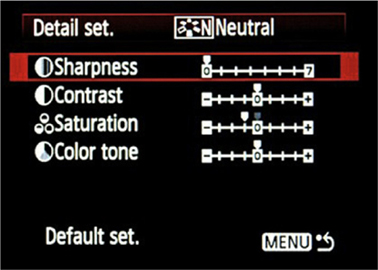
(Image courtesy of Hurlbut Visuals.)
CINEMATOGRAPHER TIP
Philip Bloom recommends the following settings for the Canon 5D Mark II and 7D (as well as the Canon Rebel T2i and 60D):
• Sharpness: 0 (all the way to the left)
• Contrast: 0 (middle)
• Saturation: −2
• Color tone: 0 (middle)
Figures 4.2 through 4.9 show examples of Canon’s picture styles. Figures 4.2 through 4.5 show the pictures you should never use when trying to shape the cinematic look with Canon DSLRs: standard, portrait, landscape, and faithful. Rather, starting with the neutral setting (as in Figure 4.6) and adjusting the sharpness, contrast, saturation, and color tone, you can begin to shape a more cinematic image (see Figure 4.7). Be aware that when you’re looking at the small screen of the camera, the image will look better than when it’s on a large screen.
FIGURE 4.2 Standard. Zeiss 100 mm, f/3.5.
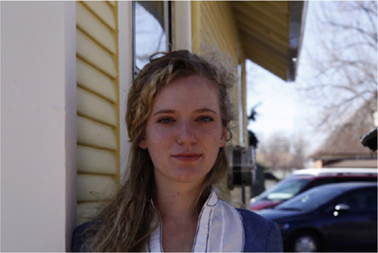
(Photo by Kurt Lancaster.)
Figures 4.8 and 4.9 are examples of SuperFlat and ExtraFlat settings (before any postproduction color grading). Be aware that the SuperFlat and ExtraFlat are designed to be adjusted in postproduction; using Magic Bullet plug-ins, for example, provides the most latitude in adjusting flat styles. If you’re working with Apple’s Color or the color correction tools in Final Cut Pro, be sure to practice before committing to a particular picture style. Do test shots and take them through post!
Picture Style: Standard (see Figure 4.2)
• Sharpness: +3
• Contrast: 0 (middle)
• Saturation: 0 (middle)
• Color tone: 0 (middle)
Notes: This picture style is too sharp and oversaturated; not good for attaining the cinematic look.
Picture Style: Portrait (see Figure 4.3)
• Sharpness: +2
• Contrast: 0 (middle)
• Saturation: 0 (middle)
• Color tone: 0 (middle)
FIGURE 4.3 Portrait. Zeiss 100 mm, f/3.5.

(Photo by Kurt Lancaster.)
Notes: The sharpness makes the image look worse and will move your image away from the cinematic look and maintain a video feel.
Picture Style: Landscape (see Figure 4.4)
• Sharpness: +4
• Contrast: 0 (middle)
• Saturation: 0 (middle)
• Color tone: 0 (middle)
FIGURE 4.4 Landscape. Zeiss 100 mm, f/3.5.

(Photo by Kurt Lancaster.)
Notes: As sharpness increases, the image tends to look worse for cinema projects. This picture style is designed to provide color accuracy, especially for the subject, but it’ll likely look too much like video.
Picture Style: Faithful (see Figure 4.5)
• Sharpness: 0 (all the way to the left)
• Contrast: 0 (middle)
• Saturation: 0 (middle)
• Color tone: 0 (middle)
FIGURE 4.5 Faithful. Zeiss 100 mm, f/3.5.

(Photo by Kurt Lancaster.)
Notes: This picture style is designed to provide color accuracy, especially for the subject. But when you shoot neutral or flat, you’ll be able to pull these colors out in post.
Picture Style: Neutral (see Figure 4.6)
• Sharpness: 0 (all the way to the left)
• Contrast: 0 (middle)
• Saturation: 0 (middle)
• Color tone: 0 (middle)
FIGURE 4.6 Neutral. Zeiss 100 mm, f/3.5.
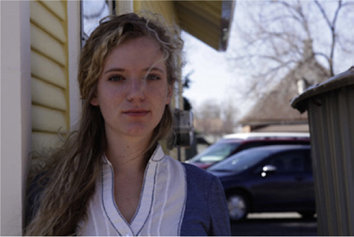
(Photo by Kurt Lancaster.)
Notes: This picture style is designed for the most leeway in post-production color grading. It provides you with room to play in post without burning in the video look as most of the other picture styles tend to do. You should begin with this setting and then adjust and test the settings you need for your look.
Picture Style: Hurlbut (User-Defined) (see Figure 4.7)
• Sharpness: 0 (all the way to the left)
• Contrast: 0 (middle)
• Saturation: −1 (middle)
• Color tone: 0 (middle)
FIGURE 4.7 User-Defined: Hurlbut. Zeiss 100 mm, f/3.5.

(Photo by Kurt Lancaster.)
Notes: This is probably one of the best picture styles you can play with. Use it as a basis and experiment. This is the setting Shane Hurlbut, ASC, recommends on his blog. In The Last 3 Minutes, he bumped the Contrast to −4 and Saturation to −2—the basic settings for shooting your image flat, which reinforces the point that you need to test and adjust until you have the look you want.
Picture Style: SuperFlat (User-Defined) (see Figure 4.8)
• Sharpness: 0
• Contrast: −4 (all the way to the left)
• Saturation: −2 (two clicks to the left)
• Color tone: 0 (middle)
FIGURE 4.8 User-Defined: SuperFlat. Zeiss 100 mm, f/3.5.
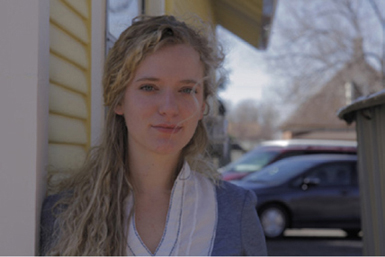
(Photo by Kurt Lancaster.)
Notes: This is the setting Jeremy Ian Thomas recommends for those experienced in postproduction color grading, but others argue you may lose natural skin tones, so be sure to test before committing to a particular picture style.
Picture Style: ExtraFlat (see Figure 4.9)
• Sharpness: 2 (two clicks from the left)
• Contrast: −4 (all the way to the left)
• Saturation: −4 (all the way to the left)
• Color tone: +2 (two clicks from the right)
FIGURE 4.9 Use-Defined: ExtraFlat. Zeiss 100 mm, f/3.5.

(Photo by Kurt Lancaster.)
Notes: As you can see, the image is washed out, but some colorists say that using these kinds of settings is the best way to do serious color grading. If you compare both the SuperFlat and ExtraFlat images to the one in Neutral, you can see the black in the car and the pupils of the model’s eyes crushed, but the flat settings lower the contrast (blacks not crushed) and provide two stops of latitude out of the shadows.
ExtraFlat was designed by Eugenia Loli when she wasn’t fully satisfied with the SuperFlat setting, claiming that it was too saturated. She took the Neutral setting as her base, and “it’s a tiny bit less contrasty, but a lot less saturated, and it doesn’t have the `red face’ attribute of the video look” (Loli, E. (2010, January 25). Flatting the flat look <http://eugenia.gnomefiles.org/2010/01/25/flatting-the-flat-look/>, accessed 19.05.2010).
The ExtraFlat file can be downloaded from http://eugenia.gnomefiles.org/images2/ExtraFlat.zip. Steps to install downloaded custom picture styles are covered later in this chapter; see steps 1–5 and 11–15 of “Picture Styles—Step by Step.”
As can be seen in all the picture style photos of the model, Lillie Laraque, the Canon 5D Mark II biases the reds. ExtraFlat is least impacted by this bias. This issue can be corrected in postproduction or altered in the camera’s color correction setup feature, which is covered later in the chapter.
Embracing 8-Bit Color Compression
Shane Hurlbut, ASC
With the 5D Mark II, I embrace the compression and that adds to my cocktail of making it look like film.4 So with 8-bit compressed color, treat it like reversal film stock5—you have to get it close [to make it work right]. You cannot take an image that you forgot to adjust your color temp, and it comes in blue and want to turn it white. Well, you can get it there, but it’s going to feel unnatural. Treat the image like you are putting the latent image that will have no color correction possibilities onto that CF card. And that has been my recipe.… I take the camera and turn it into a digital imaging technician. The camera becomes the DIT. So in my picture styles, I have a picture style that I match to my lighting. That’s the look of the movie. So if we put the picture style up and if it’s day exteriors, we roll with that picture style and we see where it is and then I slide over to what we call SEAL raw [shooting in a flatter mode]. And SEAL raw was a picture style that I basically went into the computer and bent the [color and contrast] curves so that I could suppress the highlights a little bit so they didn’t blow so much, and give me a little more latitude in the blacks. So we dial in our exposure and match lighting with the picture style that will be the latent image of the movie, then … right before we rolled, we slid it down and punched the select button and rolled on SEAL raw. It would give me a little more color correction ability in the under- and the over-exposed areas. Since the film, Act of Valor, I have altered this approach as I navigate without an owner’s manual. I use an HP 2480 Dreamcolor ZX Lighting monitor with a rec. 709 function LUT [Lookup Table]. Now, I keep a flat picture style on the camera and don’t have to switch back and forth. (Red centre #056. fxguide.com. <http://media.fxguide.com/redcentre/redcentre-056.mp3>, accessed 24.03.2010)
In addition to using a flat shooting mode, some users of the cameras have tested different picture styles (that can be set in the camera), some of which mimic different film stocks. Cinema5D.com, a blog-user group post for Canon hybrid DSLRs, lists a dozen different picture styles for different types of film stocks—from Fuji FP-100C to Kodachrome 25. You can find 7D files located at http://cinema5d.com/viewtopic.php?f=64&t=7104.
Adjusting the RED Camera (Scarlet, Epic) with Mysterium-X Sensor
Jim Mathers, a cinematographer and president of the Digital Cinema Society, discusses what he does when adjusting the settings on his RED camera with the Mysterium-X sensor. RED is a camera designed to be shot in a flat mode with the assumption that all the shots will be color-graded in post (and therefore needs to be color-graded in post before you can tell what it looks like):
The in-camera metering has been steadily improving with each firmware update, but with the new sensor and the latest firmware build, which supports “FLUT™”, (Floating-Point Lookup Table,) and REDcolor, the new Color Science for Mysterium-X, it is very well dialed in. There are really more exposure guides than anyone should ever need including False Color, Stop Lights, Zebras, Histogram, Goal Posts, Barber Pole, RAW Check, and … I honestly don’t use these in-camera tools too much, or even know what they all do.
What I like to do instead is to record a shot, then quickly load it into REDCINE-X™. This is a free application, downloadable to those registered at RED.com. It provides very sophisticated color analysis software allowing you to view the image in a variety of color spaces and several Gamma Spaces, even custom. As with RED Alert, you can adjust color, contrast, saturation, and adjust the gamma curve with a number of different interfaces, readjusting the settings you had loaded in as Metadata when you shot. You can even White Balance in post by dragging the cursor to whatever you might want to reference as white in your picture on the viewer. To top it off, you can download these settings back into the camera for better on-set calibration, which should be a great help in matching multiple cameras.
There’s a lot to play with in the new REDCINE-X™, and I found just going through it to be a very educational exercise in color management. Not that I would think myself competent to grade a movie, but it gives me a glimpse into the kinds of tools available to the trained Colorist, and I think it will help me communicate the next time I’m supervising a color timing session. In this case, it is all about giving me the confidence to make quick decisions on the set as the sun is going down, in and out of clouds, or for whatever reason I am, as usual, rushed. (Digital Cinema Society Newsletter, 26 March 2010 #6.2)
Author’s note: For those not using a RED and needing a sophisticated production tool to communicate with post-production, take a look at Gamma and Density’s DcP software at http://3cp.gammadensity.com/index-2-prod-3cP.html. You can download a demo version and test it to see if it meets your needs.
PRODUCTION COLOR CORRECTION
Shane Hurlbut, ASC, quickly embraced the Canon 5D Mark II as a cinema camera—but with limitations. He discovered that the 8-bit color space did not give him the postproduction latitude he was accustomed to in film:
Our solution was to go back to the un-compressed Cineform or Adobe CS5 4:4:4 files and start anew.6 This worked very well and it seemed to give us much more range. I also realized too late that this camera needs light. If you don’t feed it enough light the 8-bit compressed color space quickly goes to 4- and then to 2- bit color space.7 You can always create contrast by stretching the image by pushing the whites and pulling your blacks down. Underexposure is a powerful tool with this camera, but the whole image cannot be underexposed. It will result in noise, fall apart quickly in color correction and just look muddy.
(Hurlbut, S. (2010, March 30). Color Correction: Put Your Best Foot Forward. Hurlblog <http://hurlbutvisuals.com/blog/2010/03/30/color-correction-put-your-best-foot-forward/>.)
Essentially, Hurlbut realized that the H.264 codec Canon uses doesn’t have much wiggle room in post with color correction. Although it can be edited natively with some software (including Final Cut Pro), it is not the way to go because it’s being used as an origination codec, not a postproduction one. DSLR footage must be up-rezzed to a 4:4:4 or 4:2:2 color space. One of the ways to work around the codec in-camera, Hurlbut suggests, is to try to attain the look with Canon’s Picture Style Editor, modifying a RAW still image and then save it as a look you can upload into the camera (see Figure 4.10).
FIGURE 4.10 The picture style for The Last 3 Minutes was shot in modified neutral with a −4 on Contrast and −2 on Saturation.

(Still from The Last 3 Minutes ©2010 Hurlbut Visuals. Used with permission.)
In addition to engaging such user-defined picture styles as SuperFlat and ExtraFlat by adjusting sharpness, contrast, saturation, and color tone, one of the key features of the Canon DSLR revolves around the custom picture style, which allows you to take a RAW photo and set that as your user-defined picture style!
PICTURE STYLE—STEP BY STEP
1. Take a RAW picture.8
2. Plug the camera into the computer and turn it on.
3. Open up EOS Utility (install from the provided EOS Digital Solution Disk that comes with the camera); it looks like the image in Figure 4.11.
FIGURE 4.11 Canon’s software for computer control of the camera.

4. Click on the Accessories button (there are two: Control Camera and Accessories), which takes you to the window shown in Figure 4.12.
FIGURE 4.12 Window to the Picture Style Editor.
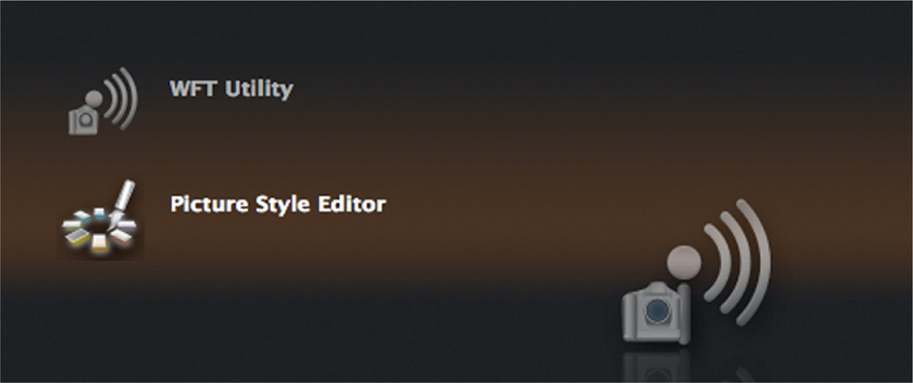
5. Open the Picture Style Editor. If you’re installing a picture style you’ve downloaded, such as ExtraFlat, go to step 11.
6. Open the folder containing the RAW image you want to reference and drag and drop it to the window shown in Figure 4.13.
FIGURE 4.13 The empty screen where you can drag an image for picture style manipulation.

7. Click on the second button from the bottom left (the image with two little windows), and you get two images: one is the original, and the second is the one you’ll manipulate (see Figure 4.14).
FIGURE 4.14 A two-up image for picture style manipulation. On the left is the untouched RAW image, while the right image shows the changes you can make in the far-right window.

8. The diagonal line in the lower-right grid represents a gamma curve. Adjusting this allows you to shape the look of your picture style. Click on the line and drag the mouse to adjust the image.
9. Dragging a point on the lower part of the line to the left will expand the space in the blacks, providing a bit more dynamic range (see Figure 4.15). Dragging it to the right will crush the blacks. Shane Hurlbut, ASC, recommends just a slight curve to the left to open up the blacks a bit. As you adjust the setting, the input/output will receive a number value. High values—the brights—should be lessened; you can do so by creating a node near the top of the line and then dragging it slightly to the right.
FIGURE 4.15 Click on the gamma curve line to make changes to the image in the picture style window.

The middle of the line allows you to adjust the midrange values. The more you bend the curves, the more extreme the image, so slight adjustments are recommended. Essentially, you’re stretching the blacks and whites and making them flat, which is the opposite of the goal in post—where you want to deepen the blacks and slowly roll off the whites. Experimentation is the best school, when it comes to shaping picture profiles! Test, Test, Test!
10. After you’ve made the adjustment to your tastes, getting the look as close as possible to the final look you desire, save the file. If you’re doing a professional-style shoot, you’ll want two files: one reflecting the final look you want as a lookup table, and the other you’ll want to create as a flat look, which is the best way to engage color grading in post. If you’re not planning to do much post work, such as when you’re shooting a journalism piece needing a fast turnaround, get the look you want as close as possible. This is the new picture style that you’ll upload to the camera.
11. Go to EOS Utilities and click on the Camera settings/Remote shooting menu (see Figure 4.16). The camera must be plugged into the computer and turned on for these menu items to appear.
FIGURE 4.16 Main menu.

12. You should see a window with a control panel to your camera, which includes battery life, f-stop settings, color temperature, shutter speed, and what picture style you’re currently on, among other features (see Figure 4.17). Look at the Picture Style section and click on User Def. 1 (there are three, and you can choose any one of them).
FIGURE 4.17 The control panel to the 5D Mark II camera. It not only provides the current settings of the camera, but allows you to import the picture style.

13. You can click on the picture style and adjust the detail settings, white balance shift, and so forth (see Figure 4.18). Click on Register User Defined style.9
FIGURE 4.18 The data for the picture style as shown in the control panel window.
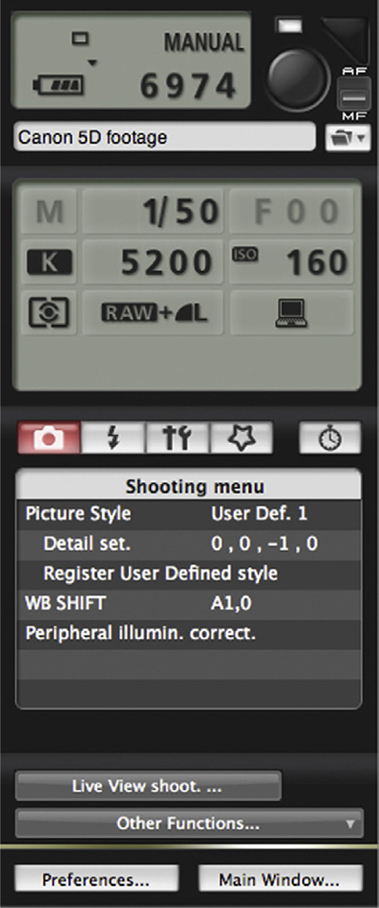
14. This will take you to a window where you can select from a drop-down menu or open a folder. In this case, open the folder and select the picture file you created from the adjusted RAW image in Picture Style Editor (see Figure 4.19). Note: This is the step you use if you’re downloading an existing picture style, such as ExtraFlat.
FIGURE 4.19 Three user-defined styles can be manipulated. Click the folder button to upload your particular picture style for each.

15. After you’ve selected your picture style file, your window will show the file. It includes the adjustments made in the picture detail shown in Figure 4.20.
FIGURE 4.20 After you upload the picture style, the window will provide an overview of the settings in-camera.

The picture style has been set and saved into your camera. Anytime you choose this user defined style, you’ll be shooting in the mode you shaped through the Picture Style Editor. Just as a cinematographer will test film stock before shooting, you should test it and experiment with others before shooting. Use a flat mode when shooting when you’re planning to do any color grading in post, and use the lookup table as your film look reference point. The best test is to put it through the decompression and editing workflow and export it onto a large screen and view it. You should be making these picture style edits only with a calibrated monitor in order to ensure accuracy, which is imperative if you’re transferring the footage to film. And taking the advice of the film-out company you’re using is a must when you’re planning to screen the end result on film.
COLOR BALANCE
Having used 15 different 5D Mark IIs on the shoot of the Navy SEALS movie, Act of Valor, Hurlbut says he has noticed different biases in the sensors; some have a slight cast of yellow or magenta. Bernardo Uzeda, the director and post-production person on the Brazilian short Casulo (featured in Chapter 8), notes how the 5D Mark II used on the shoot was “very sensitive to the color red” and he removed “red from almost 100% of the shots” in postproduction.
I teach students to shoot a white or gray card image in the lighting conditions they’re shooting under (making sure to dial in the proper color temperature) and be sure the image is truly white (or gray). If there’s a slight color cast, then the color balance of the camera may be adjusted manually by clicking on the Menu button on the camera and going into the white balance shift/white balance bracketing (WB SHIFT/BKT) menu located under tab 2 (Shooting 2 submenu of the main menu; see Figure 4.21).
FIGURE 4.21 The list of submenu items under tab 2 of the main menu in the Canon 5D Mark II.

(Image courtesy of Canon.)
After you select the WB SHIFT/BKT submenu, you will be taken to the color correction window (see Figure 4.22).
FIGURE 4.22 The white balance shift window. B=blue, G=green, A=amber, M=magenta. Move the camera’s toggle switch to adjust the parameters.
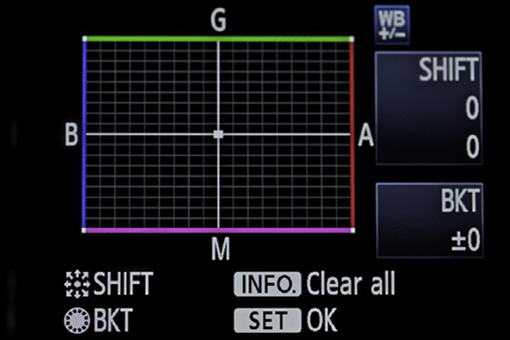
(Image courtesy of Canon.)
By making adjustments with the toggle, you can remove the color cast. If it’s reddish, move the point toward the green, for example. Use the opposite color for the one you want to alter. You can also use this tool to add color to a scene if you are trying to attain that look. Again, test it first in the field.
The most important point revolves around the fact that an 8-bit color depth is “thin,” to use the words of Hdi RAWworks colorist Jeremy Ian Thomas, especially in a Canon 5D Mark II. And as Hurlbut explains, the compressed H.264 codec does not help because there’s very little room to stretch the look of the image in post. Therefore, attain your look as close as possible to the final product. An additional note, Thomas explains that, as a colorist, he prefers the Canon 7D because the pixels are more dense—not stretched as thin as the 5D—and it gives him a little bit more play in post. Shooting a color-true chart might also be useful when wanting to get your color temperature right (look up “DSC color chart” on the Web), but they can be pricey, around $200.
To sum up, Jared Abrams, News Director for Cinema 5D, discusses the importance of planning the look of the film before you shoot:
You are building a race car, you are priming it and these guys get to paint it and boy wouldn’t it be a bummer if they painted it day glow orange on you? Neil Smith at Hdi RAWworks is really passionate about—and I agree with him totally—talking to your colorist; talk to your post people first before you ever shoot the camera. Talk to someone about the post processing and the color so when you shoot you can favor what they need to make the best product.
This chapter gave you an overview of what picture styles look like and how to engage picture styles to shape the look of your film before shooting it; it also covered the ability to shape the color correction of Canon DSLRs in-camera. The next chapter covers one of the most important tools in attaining a film look—recording quality audio—because no matter how good your look is, if the audio is bad, the audience will not be able to see how good it looks. Therefore, a clean audio design is essential in achieving the potential cinematic quality of DSLRs. Without it, you have less than half a film. Audio is not an afterthought, because a good audio design can make your film shine more than any other tool.
NOTES
1 If video is captured wrong (such as with Panasonic’s DVX100 A/B coming in at 1/60), motion-blur will need to be added to attain the 1/48 look.
2 Television broadcast utilizes interlaced scan lines, such as 60i in a camera. If not corrected in post, websites will show these horizontal lines as video artifacts, which ruins the image.
3 See Why Shoot Flat? My Definitive Answer: http://www.elskid.com/blog/?p=981&cpage=1; Flatten your 5D: http://prolost.com/blog/2009/8/3/flatten-your-5d.html;
They Shoot Horses JPEGs Don’t They?: http://photocinenews.com/2010/04/26/they-shoot-horses-jpegs-dont-they/;
Shoot flat or not?: http://www.canon5dtips.com/2010/04/shoot-flat-or-not/;
Changes in Latitudes, Changes in Attitudes: http://www.notafraid.com/2010/03/changes-in-latitudes-changes-in-attitudes/;
4 Hurlbut knows that film is closer to a 20-bit compression. However, he feels if he embraces the limitations of the 8-bit color space of the Canon DSLRs—instead of forcing it to do what it can’t—he can work around those limitations and attain a film look that works for him.
5 In other words, worry about blowing out the highlights, so be sure to expose for the highlights.
6 Chapter 6, on postproduction, covers the Cineform codec for decompressing the movie files.
7 This occurs when a poor lighting and/or wrong ISO setting is used.
8 One DSLR shooter notes how he takes a different picture for each ISO and color temperature setting; he created three picture profiles taking into consideration different color temps: Tungsten (indoor), daylight shade, and normal daylight. (Tico (2010). <http://hurlbutvisuals.com/blog/2010/03/30/color-correction-put-your-best-foot-forward/>.)
9 Notice the Live View shoot … button. Clicking on it will allow to see your camera’s image through your laptop. If you’re in the field and want to use your laptop as a field monitor, this feature allows you to do so.
